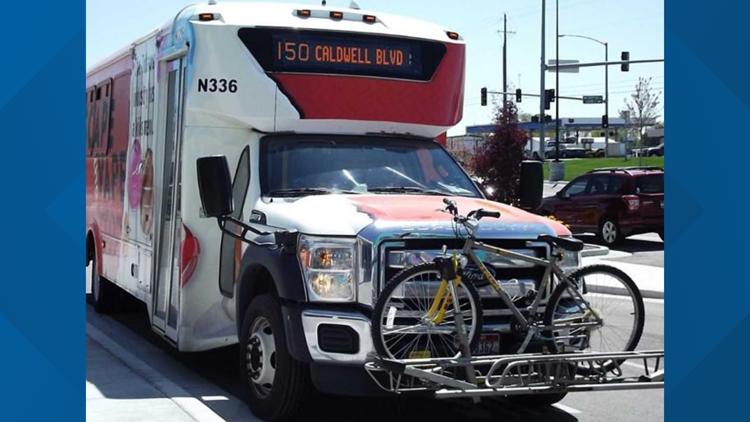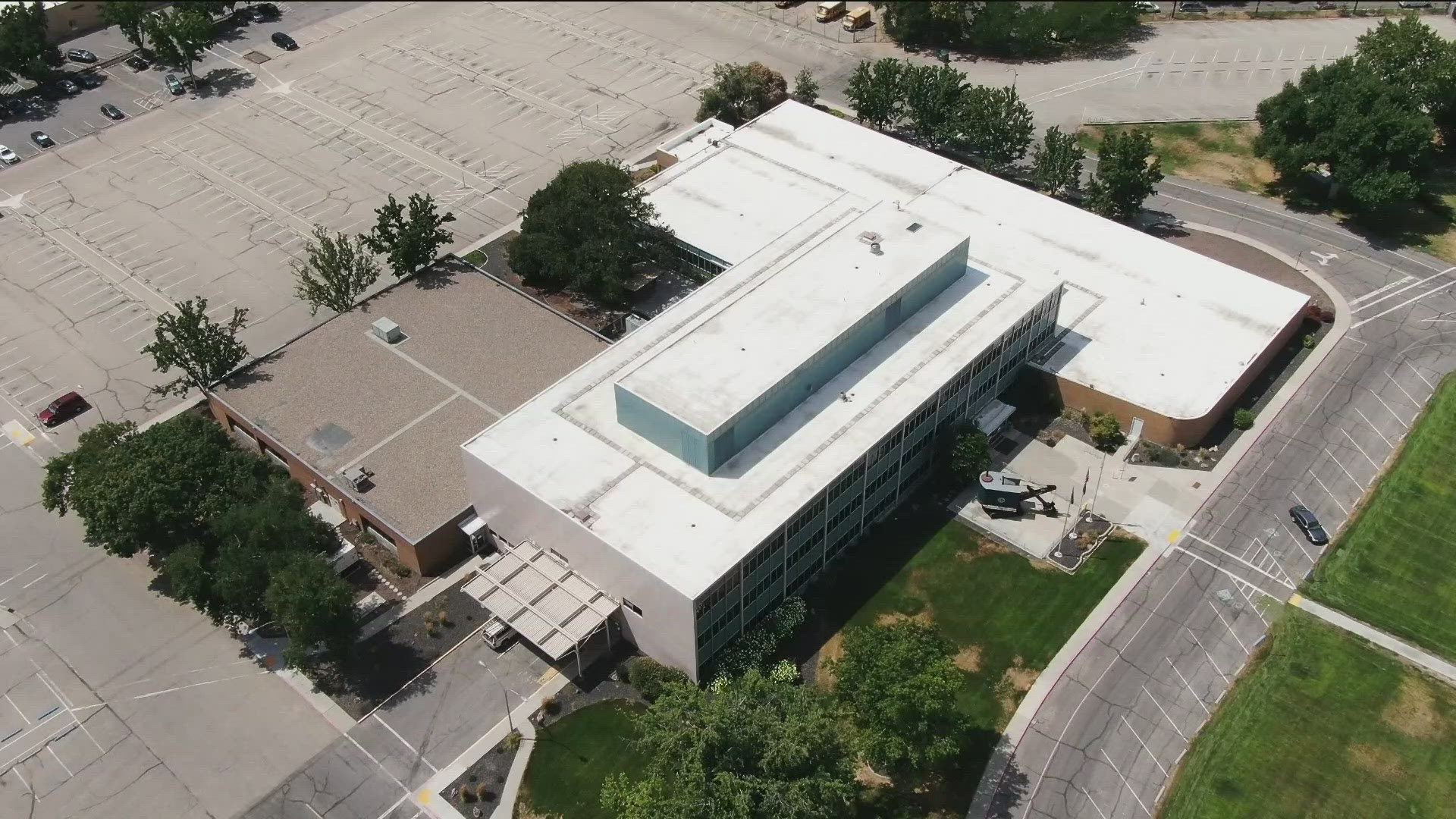NAMPA, Idaho — This article originally appeared in the Idaho Press.
The city’s 2025 fiscal year budget saw major cuts to funding for Valley Regional Transit this summer — only for Nampa City Council to restore the funding just this past week.
VRT is the Treasure Valley’s local public transportation system which runs bus routes between multiple cities. At Monday’s city council meeting, council members reinstated $233,650 to the street budget for VRT. This came after the city became at risk of losing grants and heard community complaints.
The council initially approved $471,856 from the city’s mass transit budget to go towards VRT, while cutting the $233,650.
SETTING THE ORIGINAL BUDGET
At the July 11 city workshop, VRT came under scrutiny by council members who questioned its ridership rates. VRT’s three fixed Nampa routes had 9,179 rides in 2023.
VRT CEO Elaine Clegg explained to the council that, if the budget was cut, VRT would likely cut services as well.
“It would be terribly unwise to provide 100% of services without the funding,” she said.
Nampa residents used on-demand shuttling services 24,870 times in 2023. On-demand services offered by VRT allow residents to request to be picked up from where they are.
While council members contemplated whether to cut funds, Mayor Debbie Kling maintained a strong stance in support of keeping the budget as is. Kling said previous city research shows that cutting off VRT would cost the city much more in support of its residents.
She also said that those taking public transportation are the ones who have no other means of getting around.
“If we do a paradigm shift and we don’t fund public transportation, we will have a bunch of people in our city that have zero transportation,” Kling said. “And they’re the most vulnerable population that we have.”
Council members asked if grants would be impacted if the budget were cut.
Senior Public Works Director Tom Points said that it was a “gray area” as to whether grants would be impacted.
“We can certainly still try to go after grants,” Points said.
Kling noted that VRT can use federal grants that the city would not be eligible for.
Council member Sebastian Griffin recounted his experience taking VRT buses to and from school in Boise. Griffin said he was disappointed by the under-usage of the fixed-bus routes. He said there were never more than 10 individuals riding with him.
“We as public officials do have a tough decision, and it’s weighing that balanced budget and deciding what is essential,” Griffin said.
Clegg said that Griffin’s perspective may be a limited one.
“Remember, that’s just one of the buses that day,” she said. “Remember that that route runs all day.”
Griffin questioned the reliability and connectivity of the bus system, with difficult-to-reach bus stops and time considerations as buses don’t come by periodically.
“Right now, there isn’t a need,” Griffin said. “There are no individuals in mass that are in need of this.”
Clegg said it is important to build rider trust, so at a minimum, VRT needs to maintain consistency in service.
Council member Natalie Jangula recalled her time living in New York. With a reliable transportation system, there was less hesitation to use it. Kling shared a similar sentiment.
“One of the challenges with ridership is when you don’t have enough opportunities to get on, you don’t ride it,” Kling said. “We are just in a season in history of figuring out how to meet the needs of your people.”
Some council members wanted VRT to cut fixed routes, rather than the on-demand service that has more use. Clegg said this would cause issues when connecting to other cities.
“To be honest with you, it would create a system that wouldn’t be connected,” Clegg said. “I realize that you think it will save money…(but) if you save this money here, it may spring out somewhere else.”
Clegg recommended getting public input before making such a large cut.
Council members David Bills, Randy Haverfield and Griffin voted to remove the $233,650 of funding. Councilmember Dale Reynolds and Jangula voted against this.
“I’m grateful that I have the opportunity to get in my own car, but we have people here that don’t,” Jangula said.
AMENDING THEIR DECISION
VRT funding was back on the agenda Monday evening, following recommendations from Senior Director of Development Services Mark Steuer who wrote to the council requesting an amendment to the city’s 2025 budget.
VRT planned to utilize a $560,000 Federal Transit Administration grant towards a pedestrian facilities project by Lakeview Park near downtown Nampa, which would not happen without full funding.
“Through this grant program the city would essentially be able to restore the $233,650 to the Streets Division budget and have a significant cost savings of over $320,000.00 towards a previously identified but unfunded project,” Steuer wrote.
Steuer’s letter clarifies that, without the $233,650, Nampa residents would lose access to its on-demand services.
The on-demand service receives a high ridership, Steuer wrote, with 24,870 Nampa-specific trips taken in 2023.
Griffin reiterated that he was not in support of funding fixed-routes, but understood the need for on-demand services.
Griffin referenced Route 40, which had a total 2023 ridership of 3,771 people.
“We are spending nearly $500,000 for 10 people a day to ride the bus,” Griffin said.
However, the $471,856 mass transit funds budgeted for VRT goes towards three fixed routes and a variety of transportation programs, such as Canyon County Rides2Wellness for patients attending medical appointments.
In 2023, 43,949 total rides were taken by Nampa residents. With a total requested budget of $705,506 from Nampa, this would equate to approximately $16 per ride.
Several VRT users came to the city council in support of public transportation.
Caldwell resident Kelly Chapman said they use VRT on demand to access the Nampa Public Library and would not be able to get there otherwise.
Chapman said that, by cutting services, Nampa residents would not be able to access the Caldwell YMCA or Indian Creek Plaza.
Nampa resident Julie Slattery works at St. Alphonsus and takes the bus every day. Without it, she said she would be unable to work.
Speakers during public comment emphasized the need VRT fulfilled for those who have disabilities.
“I don’t look at this as an issue where I am attacking minority groups,” Griffin said after heated feedback from the public.
Instead, Griffin maintained that ridership is too low and that being fiscally conservative was the right thing to do. He felt that the council was being “strong-armed” into funding VRT, with on-demand services being used as a bargaining chip.
The council came to a vote in favor of restoring the $233,650 to VRT. Griffin and Haverfield voted against it.
“I made a comment, or a motion, to myself a long time ago that I wouldn’t spend money after midnight, so I said no,” Haverfield said at the end of the seven-hour meeting.
This article originally appeared in the Idaho Press, read more on IdahoPress.com.



